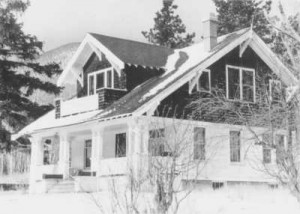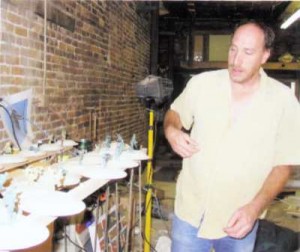Essay by Ralph “butch” Clark
Water – December 2003 – Colorado Central Magazine
MUCH TOO OFTEN GRAND SOLUTIONS go in search of problems. Such was the case with Referendum A on Colorado’s ballot. We were simply told that Colorado must store more water or lose it to downstream states.
However, the easiest traditional water storage projects have already been built. From top to bottom, flows in most of Colorado’s streams are already over committed or appropriated. Five major rivers have their headwaters in Colorado, but much of their water must be delivered to downstream states.
Colorado is already water-limited. For example, some 25 years ago the Exxon Corporation was planning three pipelines to bring one million acre-feet of water a year from the Missouri River at the Nebraska border to Grand Junction for oil shale development.
Locally, recent estimates for traditional new storage projects are $8,000 to $12,000 per acre-foot of storage capacity. At these costs, the $2 billion of Referendum A would provide only 175,000 to 250,000 acre-feet of storage. Such water storage is simply not affordable for many of Colorado’s uses and users.
Perhaps the solution is to simply slow down the flow of water through Colorado. Slowing the flow, especially during spring runoff, allows a little more time and opportunity to use this water — in-stream and out-of-stream — before it leaves the state. When water stays in Colorado longer, it provides late-summer and fall season flows with particular benefits to agriculture, fishing, wildlife habitat, kayaking, and rafting (interests which cannot necessarily afford to pay much more for water).
BEST — Beaver Enhanced Storage Technology — was pioneered many years ago. Beaver dams create ponds, wetlands, and recharge for adjacent aquifers. In combination these act as sponges to store and hold back water during peak spring runoff and then release it gradually during the rest of the year.
Research at the University of Wyoming found flows through degraded watersheds could be restored and streams brought back to life with the introduction of beavers. Further, the beavers could create water storage capacity at about $11 per acre-foot in the late 1980s. This cost was mostly for installing the means for careful monitoring of the beavers’ progress. The four-footed engineers did the construction, sometimes with initial provision of materials and food.
Two centuries ago, beavers built and maintained water storage from the east to west coasts and from northern Canada to the Gulf of Mexico. But they were almost eliminated by the fur trade.
WE KNOW BEAVERS will cut down trees for dams, and recently, we have learned that when trees are not available (especially along streams at lower elevations and in the southern states), beavers use willows and grasses to build dams.
Colorado has thousands of miles of small streams at upper and mid-level elevations, and many hundreds, if not thousands, of usually dry draws where beaver dams once stored water. Restoration of beavers to build dams and ponds and thus restore watersheds could offer many benefits to Colorado that go beyond simple water storage.
The economic advantages are clear. At a present cost of $40 per acre-foot of capacity created, about 1.5 million acre-feet of water storage could be achieved for $60 million with BEST.
Some of this cost would be for working with the beavers to make sure their projects don’t conflict with road culverts, irrigation ditches, landscaping, etc. This is known as mitigation.
Extension Services at many state universities and information at other websites across the country offer many practical solutions for working productively with beavers.
Ralph “Butch” Clark lives in Gunnison and is a former director of the Upper Gunison River Water Conservancy District.


